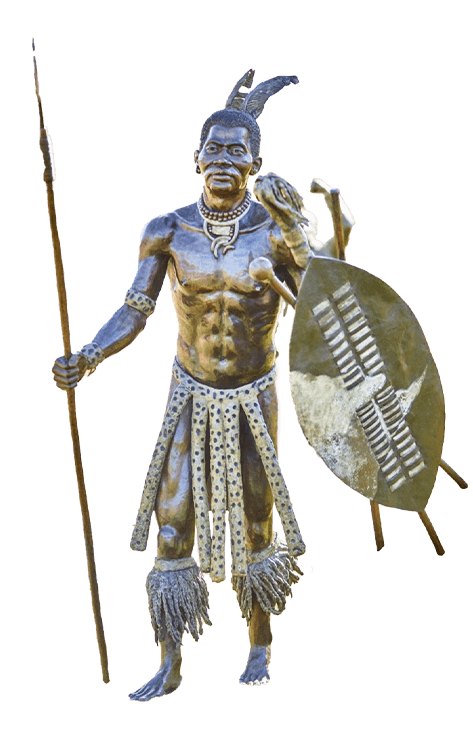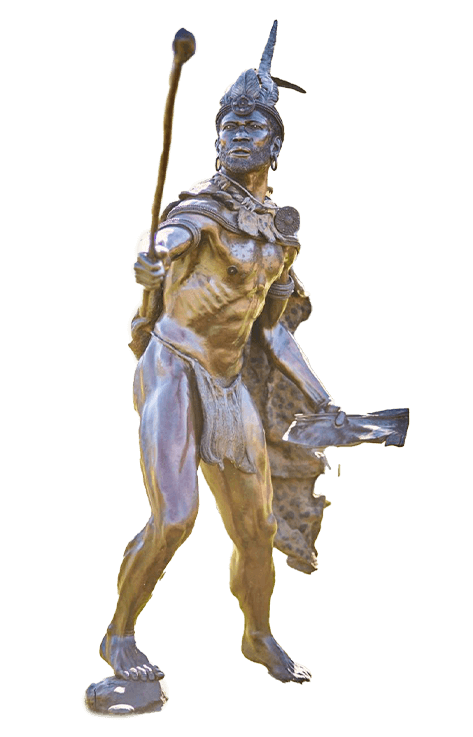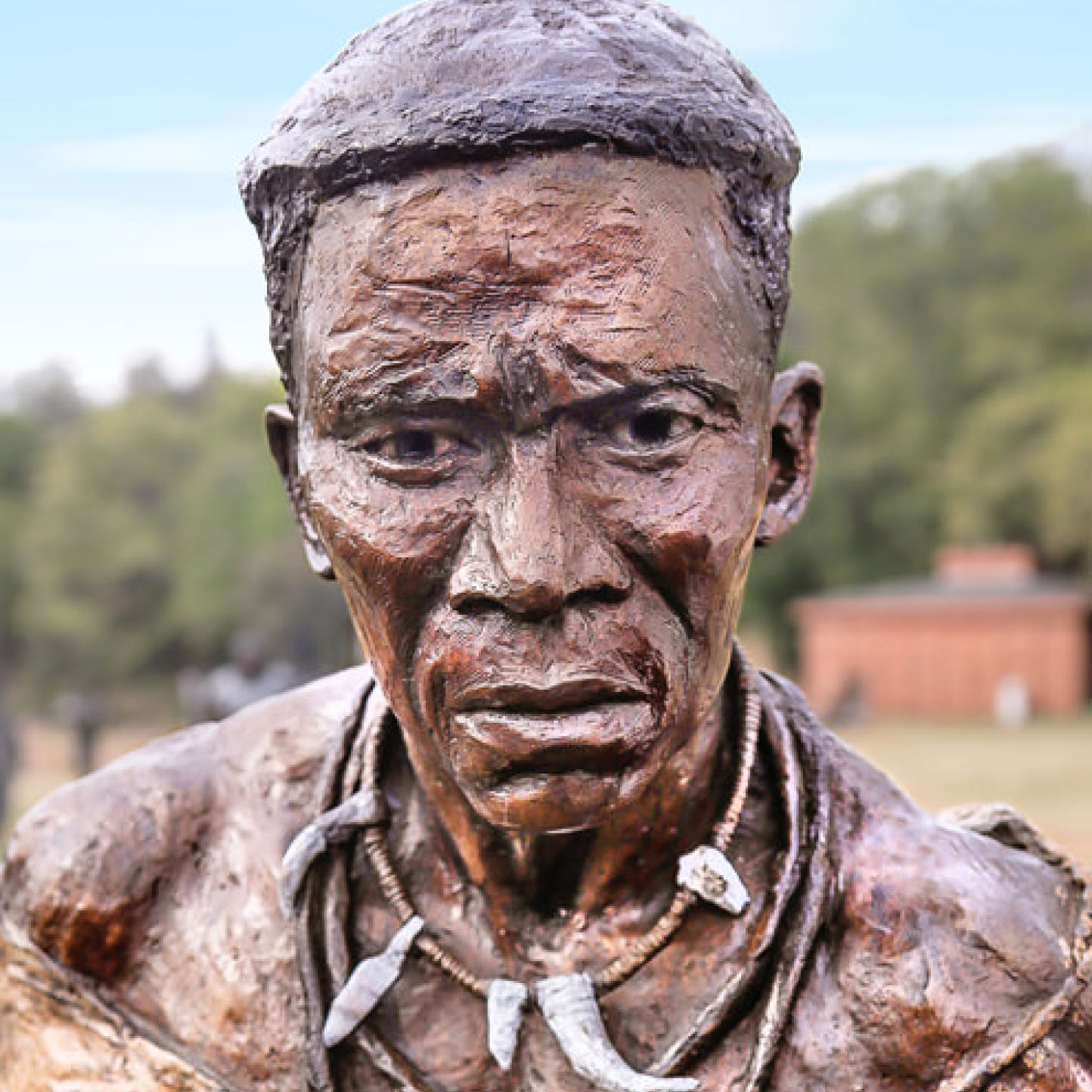
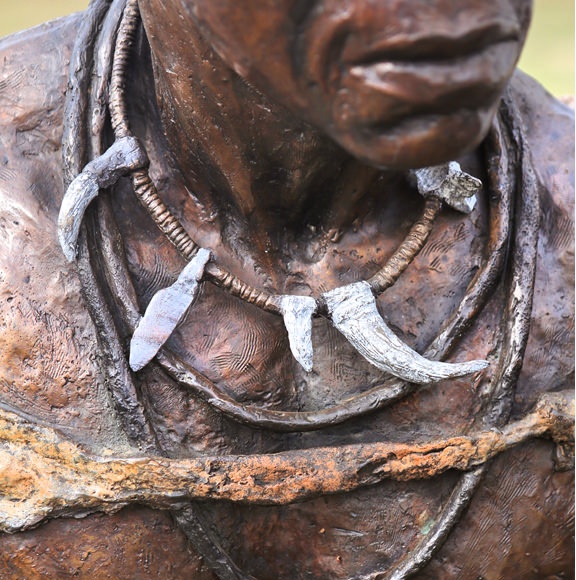
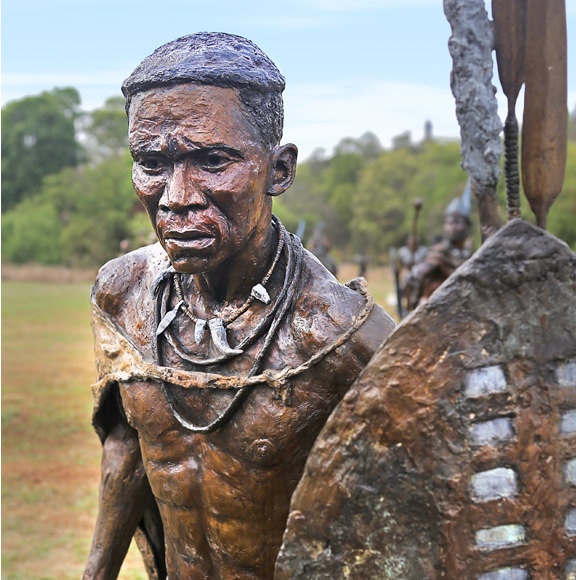
"I have swallowed Mampuru and if you want him you had better take out a knife and cut my stomach open and then take him out."
King Nyabela to General Piet Joubert, quoted in ‘The Petition on Behalf of the Mandebele Tribes’ sent to the South African Institute of Race Relations, 1952 (Historical Papers Research Archive)
King Nyabela
1825 – 1902
Regent King of the Ndzundza-Ndebele
King Nyabela became the leader of the Ndzundza-Ndebele when King Mabhogo died in 1879 and his son Fene was too young to rule the kingdom.
His reign was characterized by complex historical events and overshadowed by the aggression from the Afrikaners of the Zuid-Afrikaansche Republiek (ZAR) and the British, both vying for political and economic power. Christian missionaries in the region also complicated matters, their loyalties swinging between the Africans and the colonials as wars over land unfolded around them.
Nyabela, attempting to safeguard the integrity, identity and jurisdiction of his people, fought several wars against the ZAR. A crisis came in 1882 when the baPedi King Sekhukhune and 14 of his advisors were killed on instruction of Mampuru, Sekhukhune's half-brother who contested Sekhukhune's kingship. Mampuru fled and sought refuge with King Nyabela, who in keeping with Ndebele custom refused to hand Mampuru over to the Afrikaners.
The ZAR had previously attempted and failed to subdue the amaNdebele in 1849, 1863 and 1864. The Mampuru incident of 1882 offered them a new opportunity to attack. In the ensuing war, known as the Mapoch War (1882 -1883) that lasted nearly one year, Commandant Piet Joubert commandeered as many as 2,000 Afrikaner fighters from the Afrikaner republics to fight the Ndebele king.
Nyabela gathered supporters from his allies, the amaNdebele, amaSwazi and baPedi. Gun faced gun, and there were many casualties on both sides. Nyabela's forces retreated to the Ndzundza-Ndebele fortified stronghold, KoNomtjarhelo, later known as Mapoch's Caves to which the Afrikaners laid siege.
The caves were a remarkable fortress, some being so extensive that fighters disappeared in one entrance only to reappear at another more than a kilometre away. General Piet Joubert chose not to attack the fortress. His preferred strategy was to besiege the caves, confining the chiefs and their people to their mountain fortresses and allowing starvation to do the rest.
After nine months, with little water and food left, cut off from all supplies, starving and ill, Nyabela and his people were forced to surrender. The prolonged campaign had cost the ZAR a small fortune. As reparations, 36,000 hectares of Ndebele land was divided following a proclamation on 31 August 1883. All Afrikaner men who had fought against Nyabela received seven hectares of land each.
Punishment was severe. The homesteads and lands were destroyed. The emaciated resistors were herded into concentration camps in Pretoria. Mampuru and Nyabela were found guilty and sentenced to death by hanging but the British intervened, claiming Nyabela as their subject, and his sentence was commuted to life with hard labour. Mampuru, however, died on the gallows.
King Nyabela was released 15 years later and died in 1902 near Pretoria, the last king to rule over KoNomtjarhelo. Upon his death, Nyabela was succeeded by Fene Andries, the heir to the throne.
